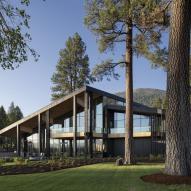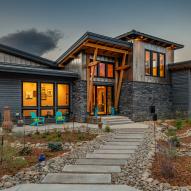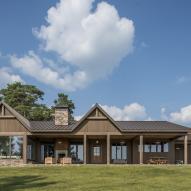Why Larch Rivals Cedar
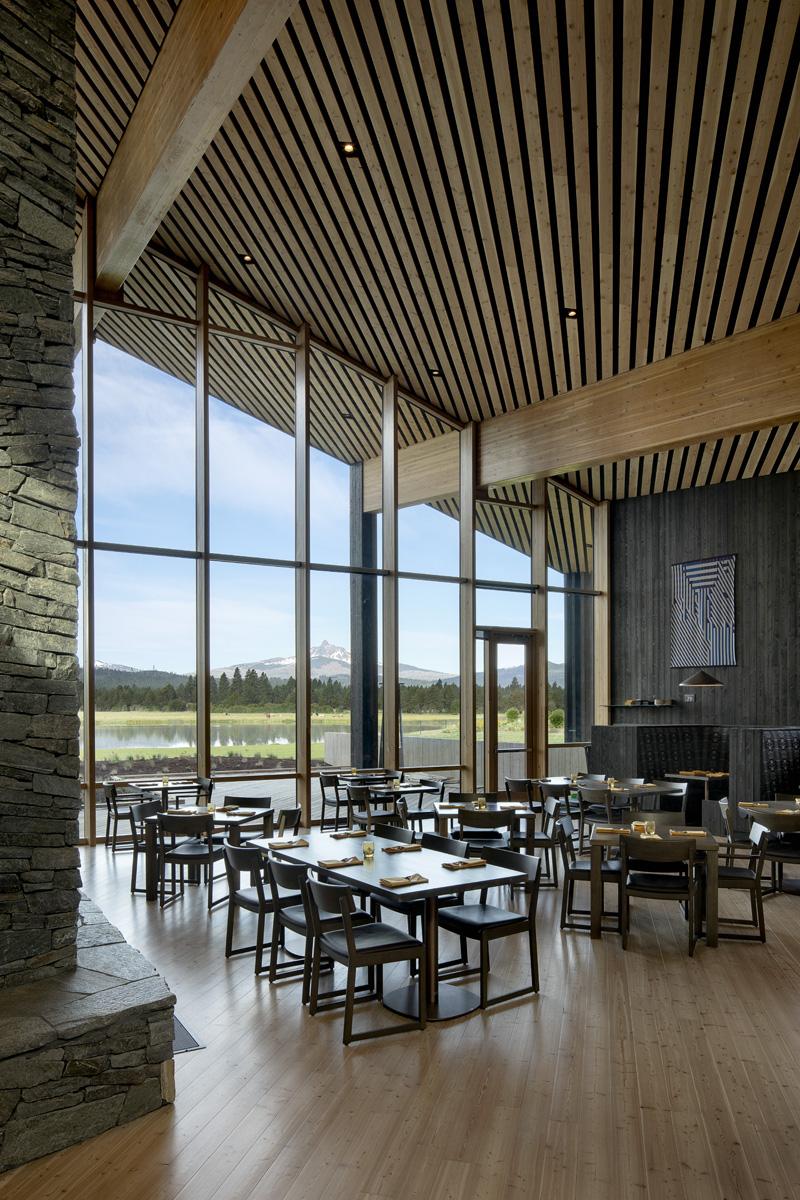
Pioneer Millworks Larch on the ceiling
Larch is a softwood found amongst the Douglas fir forests mostly of the Pacific Northwest. Or, found in the McMinnville, Oregon mill of Pioneer Millworks in tall stacks waiting to be burned for Shou Sugi Ban or finished for a sustainable alternative to Western Red Cedar siding.
“The old-timers will tell you that today’s Larch is better than the third-generation Western Red Cedar that’s in the market — especially in terms of rot resistance,” shares Jonathan Orpin, CEO & Founder of Pioneer Millworks. His over 45 years in the wood industry and environmentally focused advocacy in land use and building science lend him credence to know. Orpin has been advocating for the use of Larch over more traditionally thought of rot resistant species for years. Not only is the cutting of Larch trees a biproduct of the Douglas fir harvesting that is more economical (because the Larch grow amongst the stands of Doug fir) but they are more often used as fuel than celebrated as a building material.
“George [Brinkman] came to us asking if there was something we could do with this Larch he was harvesting and didn’t want to turn into firewood. We tried to use it for timber in timber framing, but it was problematic for all sort of reasons,” tells Orpin. “But as we were developing our Shou Sugi Ban line, we tried the Larch and it burned SO beautifully. It was much better than the Western Red Cedar because it didn’t have the crystalized structure you have to fight with the burn. The Larch just takes the char so well.”
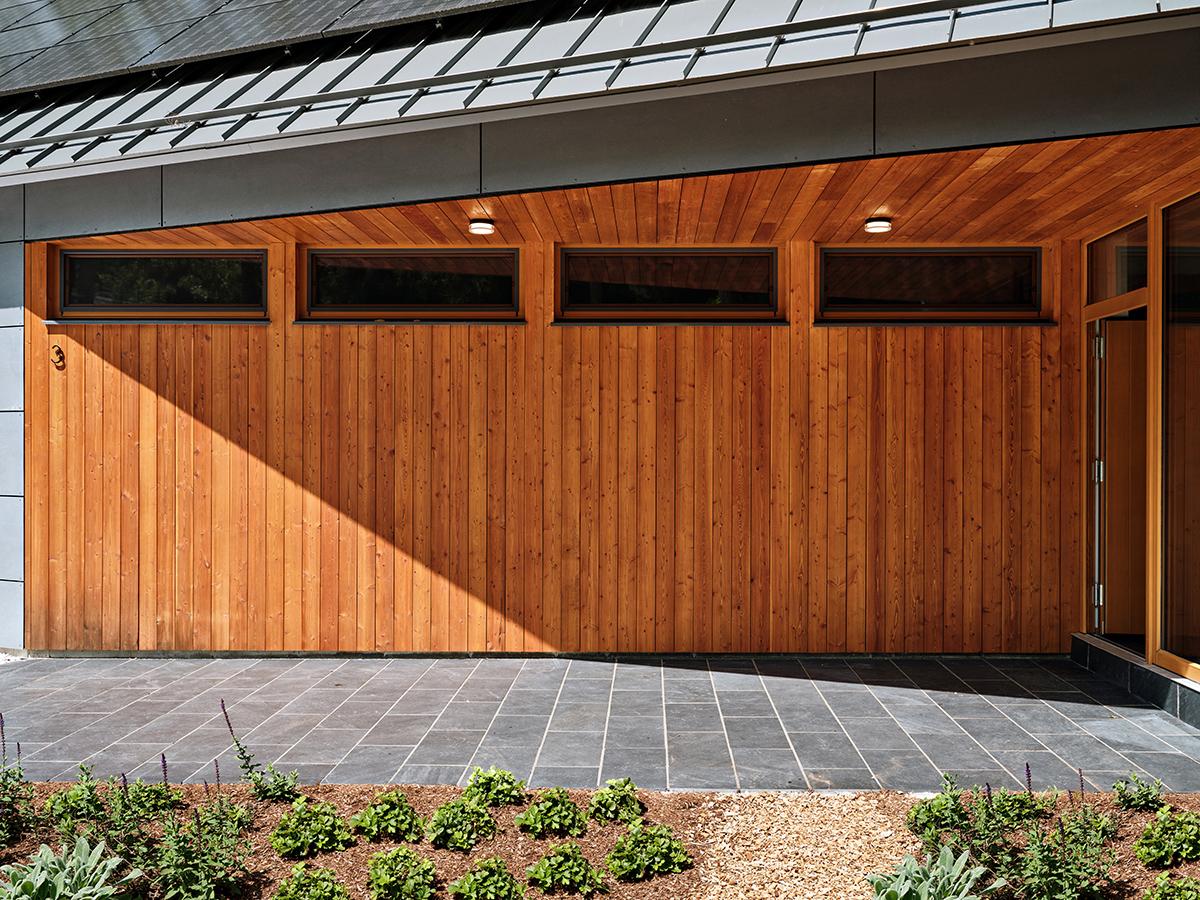
Larch Tawny by Pioneer Millworks
Larch has it’s benefits beyond charred siding because it doesn’t have the salmon undertones that Douglas fir brings to the table and that lends it well to other finish colors. “The wood tones of Larch are really nice,” says Alex Monachino, product acquisitions and sampling for Pioneer Millworks. “The lighter tones of Larch allow the pigments in the finish to really stand out – it takes a finish really easily.”
When looking for a wood siding material for your home or building, folks often gravitate to Western Red Cedar because they are hoping for a product that is natural, easy to finish, and won’t take a lot of maintenance. The popularity of Western Red Cedar has made its supply unstable and cost higher than ever before. And it’s being harvested as younger trees, not lending itself comparable to the Western Red Cedar of decades past.
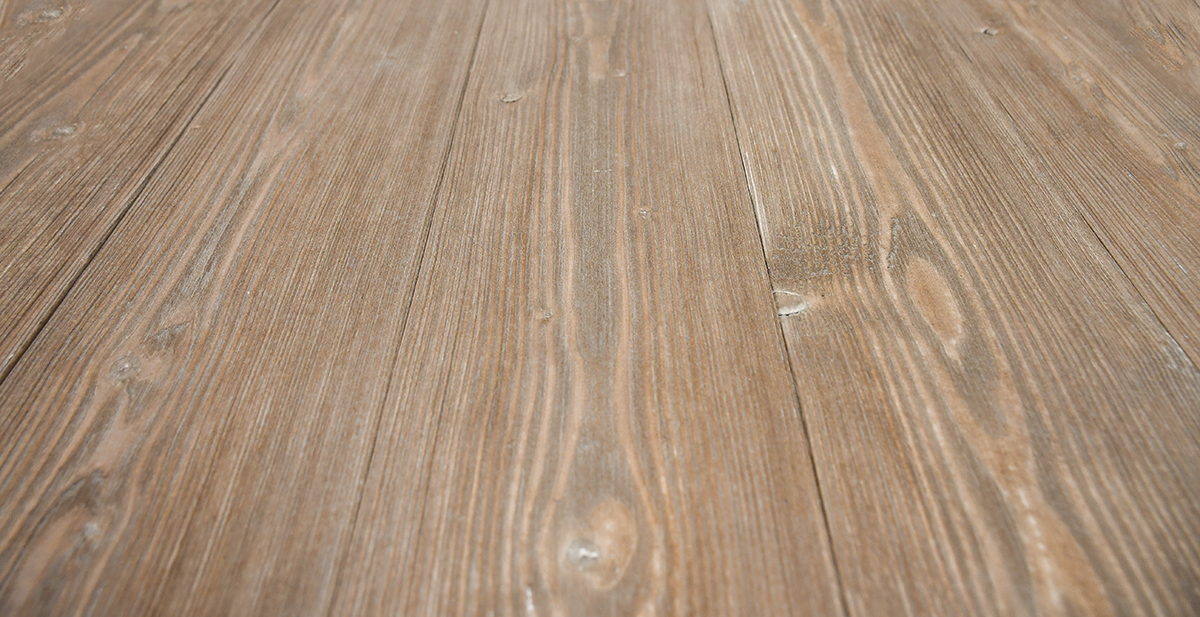
Larch Camel by Pioneer Millworks
“With younger growth Larch, the knots are small and stable,” explains Monachino. “The tighter knots don’t blow-out when we’re milling which makes it a beautiful material to work with. A Larch tree doesn’t need as long to mature to become stable as other species. And the supply is consistent and stable.”
“Part of what makes our larch so appealing is that it’s rescued from becoming structural grade material on the green chain,” says Jonathan Taylor, Operations Manager at Pioneer Millworks. “Once the timbers are harvested, our mills in BC know exactly what to look for when a high-grade larch tree goes rolls down the line. By pulling out the finer softwoods from a large run of structural material, we’re maximizing the usefulness of a material that might be wasted.”
Because Larch grows among the stands of Douglas fir, it’s difficult to have Larch that is FSC-certified. Instead we work with a supplier that is PEFC-certified adding the third-party verification that their Larch is sustainably grown and harvested.
“PEFC does the same health checks on forests and harvesting as other certifications, it’s just more prevalent in Canada and Europe,” explained Michele Caryl, Pioneer Millworks Acquisition Manager and long-time sustainability certification manager. “What we like about it is knowing that the forests are cared for in a way that protects the soil and isn’t clear cut. Having the certification is another tool in the background checks we do on our suppliers.”
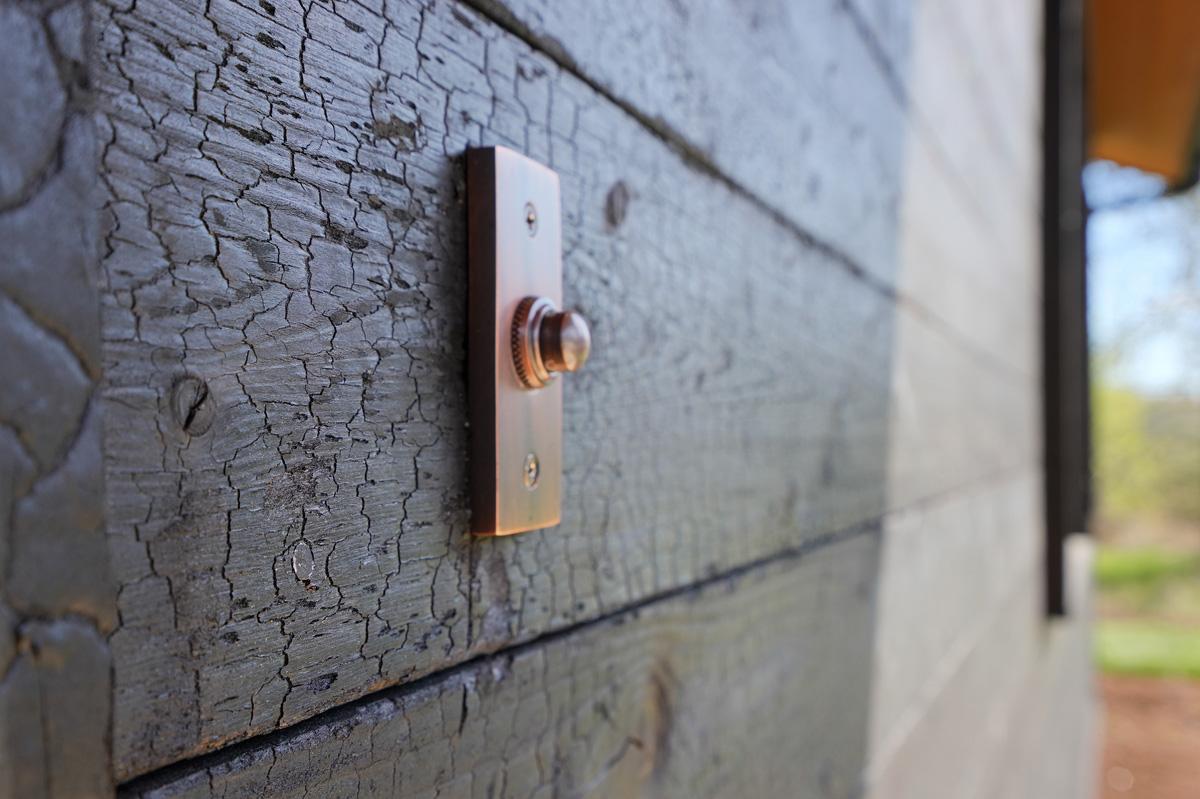
Larch Deep Char by Pioneer Millworks
Jonathan summed it up with a sigh and a smile, “Larch is cost effective, long-lasting, easy to finish, take a burn wonderfully, and is PEFC certified — what’s not to like?”


